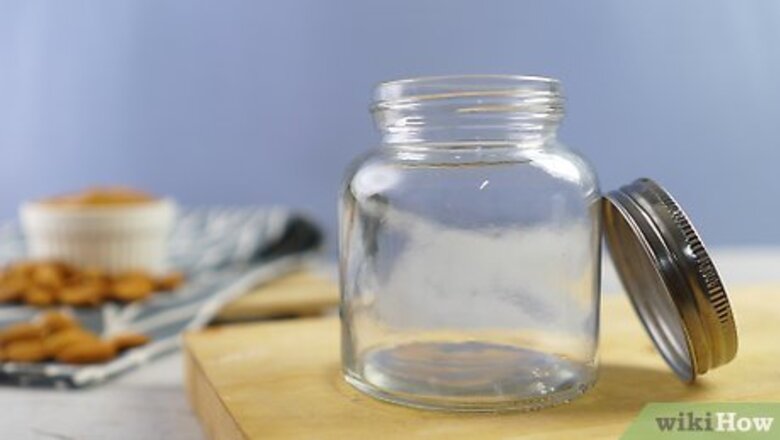
views
Transfering Your Almond Butter to a Jar
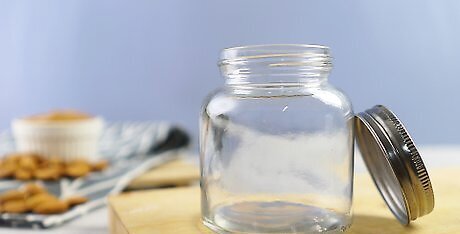
Use a glass jar with a lid. Buy a glass jar with a screw-on lid, such as a mason jar, or reuse an empty jar from store-bought nut butter or jam. Make sure it is large enough to hold all of your homemade almond butter, or use more than 1 jar. You can purchase mason jars in different sizes at many supermarkets or order them online.

Wash the glass jar and its lid with a sponge and dish detergent. Wash the jar and lid with hot water and dish soap to remove any substances. Rinse the jar and lid thoroughly, inside and out, to get rid of the detergent residue. If there is any scale or hard water film on the glass, you can also soak the jar in a solution of 1 c (240 mL) of white vinegar and 1 gallon (3.78 L) of water for at least 1 hour.
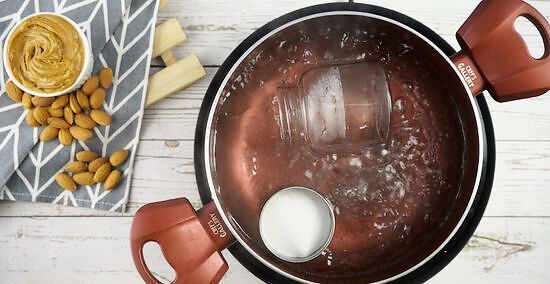
Boil the jar and lid in water for 10 minutes to sterilize them. Fill a pot with enough water to submerge the jar and bring it to a boil on the stove. Place the jar and lid, apart, in the boiling water for 10 minutes. Remove them carefully with tongs and let them cool to the touch. Washing the jar and lid will clean them but not totally sterilize them, so it’s important to boil them as well to ensure they are totally sterilized. This will also get rid of any unrinsed detergent residue that could cause bad tastes.

Dry the jar and lid completely. Wipe off excess moisture with a clean paper towel or freshly laundered dish towel. Let the jar and lid air dry until there is absolutely no moisture on them. Moisture in the jar can make your homemade almond butter go bad faster, so make sure the jar and lid are totally dry before you proceed.
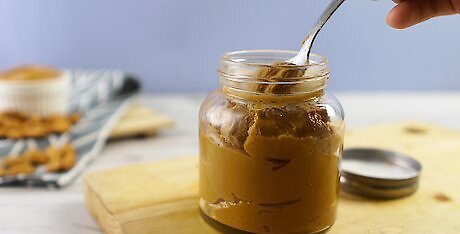
Scoop your almond butter into the sterilized jar. Use a spoon to transfer your homemade almond butter into the jar. Fill it to just below the rim and screw the lid on tightly. Air exposure is one of the factors, along with heat and light exposure, that can make homemade almond butter go rancid quickly, so make sure the lid is on very tight.
Storing Your Almond Butter

Keep fresh almond butter at room temperature for up to 1 week. Put the jar somewhere like a cupboard or pantry if you prefer to not chill it while you use it for the first week after you make it. Avoid spots near appliances like your refrigerator or oven where the temperature gets higher than the rest of the room. If room temperature is above 70 °F (21 °C), don’t store your jar of almond butter at room temperature for any length of time at all. Avoid leaving the jar open and out on your counter for long periods of time. Close it and put it back in storage as soon as you’re done using it.

Store the jar of almond butter in your refrigerator for up to 1 month. Place the jar in your refrigerator right away or after storing it at room temperature for a week. It will stay good in the fridge for about a month, and sometimes longer.Tip: An added benefit of keeping almond butter in the fridge is that the oils don’t separate like they do at room temperature. This means your homemade almond butter will stay nice and creamy and you won’t need to stir it each time you want to use it! Homemade almond butter does not have the preservatives that some store-bought almond butters have, so it’s always best to keep it cold to preserve it. If a refrigerator is not an option, keep the jar in the coolest, darkest, driest place possible. For instance, in a root cellar or an uninsulated basement.
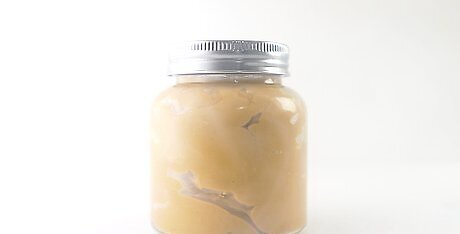
Put extra almond butter in the freezer for up to 3 months. Place any almond butter that you don’t think you will use within a month in a separate jar. Keep it in the freezer and take it out when you run out of almond butter in your fridge. Defrost frozen almond butter overnight in the refrigerator. You can make a large batch of almond butter for convenience and portion it out into jars that you can go through in a month or so. Keep 1 jar in your fridge and put up to 2 others in your freezer to pull out as you go through the almond butter in the fridge. Give away any extra jars of almond butter that you won’t consume within about 3 months.

Use a clean utensil every time you scoop almond butter out of the jar. Always use a clean spoon or butter knife to take almond butter out of the jar. This will reduce the chances of transferring bacteria to the jar that can cause the almond butter to spoil. Avoid dipping your fingers into the jar and double-dipping utensils after spreading almond butter on other food items, as well.
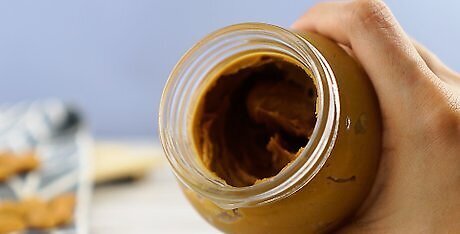
Discard the almond butter when it shows signs of spoiling. Look at the almond butter whenever you open the jar to see if the solids have turned into liquid or if there is any mold or fungus growing in the jar. Smell the almond butter to check if it smells sour or rancid. Don’t eat it if you notice any of these signs of spoiling. If you don’t notice any of these signs, but the almond butter starts to taste sour, don’t eat it either. Eating rancid nut butters can cause food poisoning, so don’t risk it if you think your almond butter has gone bad. You can always whip up a new batch!










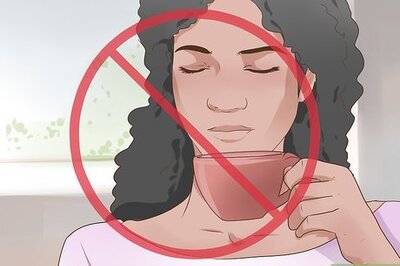



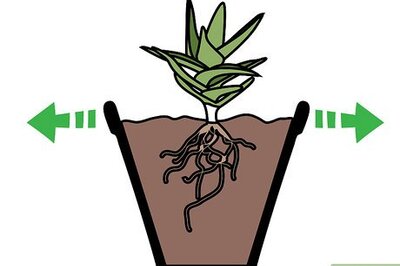




Comments
0 comment